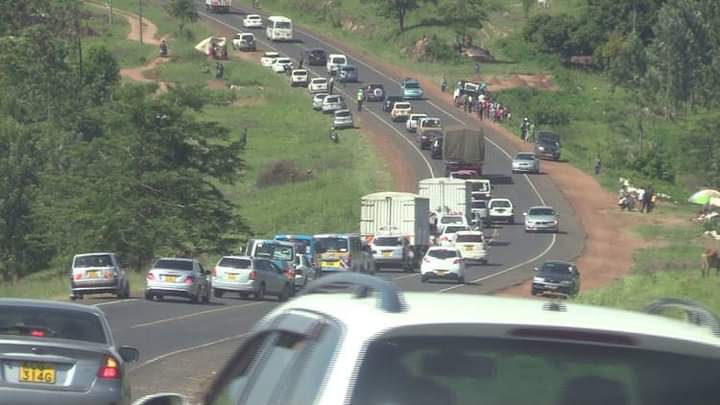- The Kenol-Sagana-Marua dual carriageway is transforming traffic management, reducing congestion, and enhancing road safety in Kenya, in ways many never imagined
- Previously, the single-lane road saw vehicles crawling bumper to bumper for hours, especially during peak times
- The project was initiated during the presidency of Uhuru Kenyatta and commenced in late 2019
- The highway stretches 84 kilometers and was funded by the African Development Bank jointly with the Government of Kenya at an approximate budget of KSh 16.7 billion
The Kenol-Sagana-Marua dual carriageway has become a transformative infrastructure project in Kenya, significantly improving traffic flow and boosting the regional economy.

The highway, part of the larger Northern Corridor, stretches 84 kilometers from Kenol in Murang’a County to Marua in Nyeri County, passing through Kirinyaga County. It is a vital segment of the Great North Road, which connects Cape Town to Cairo, facilitating trade and movement across Africa.
The project was initiated during the presidency of Uhuru Kenyatta and commenced in late 2019. The construction, overseen by the Kenya National Highways Authority (KeNHA), is funded jointly by the African Development Bank (AfDB) and the Government of Kenya, with a total budget of approximately KSh 16.7 billion (USD 155 million). The Chinese firm Jiangxi Engineering Group was contracted for the construction, which began in October 2020.
Objectives
The primary objective of the Kenol-Sagana-Marua dual carriageway was to decongest the existing single carriageway, which had been a major traffic bottleneck due to the high volume of vehicles traveling between Nairobi and the central and northern regions of Kenya. This highway is has significantly reduce travel time, improve road safety, and reduced the frequency of accidents, particularly in high-risk areas like Kambiti and Kenol.
In addition to easing traffic, the dual carriageway has enhanced the economic landscape of the region. It has boosted local economies by improving access to markets for agricultural produce and facilitating smoother movement of goods and people. The road is also expected to foster trade with Ethiopia, addressing some of the neighboring country’s import challenges and enhancing bilateral trade relations.
Must Read:
1: Kanze Dena Says For 2 Years She Worked Without Salary at Uhuru Kenyatta’s Office
2: Tuk-Tuk Driver Dies, Six Students Seriously Injured in Kitale-Eldoret Highway Crash
Impact on Counties and Residents
The highway traverses five counties: Murang’a, Kirinyaga, Machakos, Embu, and Nyeri. Each of these counties stands to benefit from improved connectivity and increased economic activity. Towns along the highway, such as Kenol, Makutano, Sagana, and Karatina, are already experiencing economic growth due to increased traffic and business opportunities.
Traders in Kenol, for instance, have reported a surge in business as motorists and travelers make stopovers, boosting local commerce and creating job opportunities.
Completion
Despite its significant benefits, the project has faced several challenges, including delays due to funding issues and compensation disputes with landowners. In November 2023, construction was briefly halted due to a pending payment of KSh 900 million to the contractor, Jiangxi Engineering Group. The issue was later resolved, allowing construction to proceed towards its scheduled completion.
The dual carriageway is now nearing completion, with the final stages expected to be finished by October 2024. Upon completion, the highway will not only alleviate traffic congestion but also contribute to the socio-economic development of the region and the country at large.

